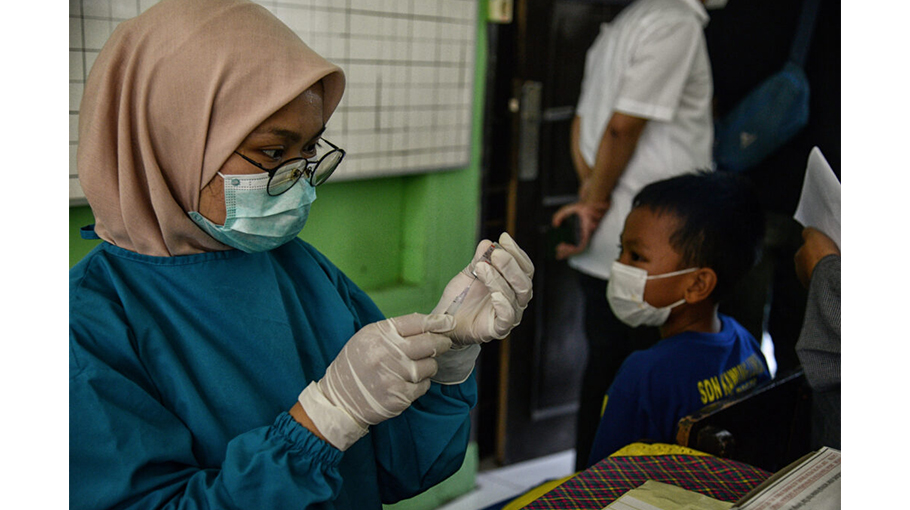How the Quad can help build a better Indo-Pacific via health diplomacy

Southeast Asia has become a critical region in the escalating geopolitical tensions between the United States and China. Given the region’s pivotal role, these two countries must develop trust to ensure stability and promote prosperity. Recovering from the COVID-19 pandemic creates new opportunities to build this trust through health diplomacy.
The Quadrilateral Security Dialogue (Quad) launched a vaccine partnership in March 2021, marking the United States–India–Japan–Australia grouping’s first foray into the health space. Explicitly positioned as an endeavour to effectively tackle the COVID-19 health crisis in the Indo-Pacific region, particularly Southeast Asia, the scheme was an implicit effort to neutralise China’s earlier vaccine outreach in the region.
India was supposed to be the manufacturing backbone of the initiative, with financial backing from the United States and Japan. Japan and Australia would then leverage their development cooperation network in Southeast Asia to help build last-mile delivery capacities.
But the partnership relied on a single facility, Biological E, to deliver one billion doses by the end of 2022. This was never achieved due to production issues and a vaccine export ban by Indian authorities throughout much of 2021. The Quad only delivered its first doses to Southeast Asia in April 2022.
The Quad’s preferred vaccines, Corbevax and Janssen, also faced quality issues. The former was not listed in the World Health Organization’s emergency use listing until the start of 2024, which is necessary for international donations.
Janssen faced rejection in some nations due to a potential clotting risk. These issues could potentially diminish trust in future Quad health initiatives in the region.
The security dialogue must move beyond centralised vaccine manufacturing and exports and develop a long-term plan for improving pharmaceutical manufacturing capacity in the Indo-Pacific, especially Southeast Asia. Technology transfer is the key to maintaining favourable power dynamics and health security in the region.
Through the facilitation of technology transfer, investment and knowledge sharing, the Quad has the potential to upscale existing health manufacturing capacity in Vietnam, Indonesia and Thailand. This strategy not only improves health security among Association of Southeast Asian Nations (ASEAN) member states but also reduces dependency and promotes adaptability in the face of future health crises.
But this effort may face resistance from within the group. The US government has been known to resist technology transfer on the ground of intellectual property protection. One potential workaround is to have Quad Vaccine Partnership supports patent-free vaccines like Corbevax much earlier in the research and development (R&D) stage. The Quad can direct its public funds to support the democratisation of intellectual property through non-profit, patent-free R&D, instead of giving extra returns to pharmaceutical firms by absorbing their R&D risk.
Another source of friction may come from India which may lose its position as the monopoly manufacturer of the Quad. But vaccine flow data suggests that Southeast Asia was not a target market for India’s COVID-19 vaccines, as it mostly supplied the region through the multilateral COVAX.
China has also shared its vaccine technology with the region, even investing in an mRNA vaccine factory in Indonesia with the view of supplying the Southeast Asia market. The Quad has lagged behind China both in vaccine distribution and technology transfer in Southeast Asia and should consider elevating its technology engagement with the region.
Putting an emphasis on enhancing pharmaceutical manufacturing capacity aligns the partnership’s activity with the prevailing regional priorities of Southeast Asia. For example, Thailand and Indonesia have developed the ChulaCov19 vaccine and the Inavac vaccine, respectively, to be self-sufficient in the future. The ASEAN Leaders’ Declaration on ASEAN Vaccine Self-Sufficiency and Self-Reliance and the ASEAN Drug Security and Self-Reliance report place great importance on manufacturing vaccines and medical drugs.
But the benefit of the Quad’s investment in pharmaceutical manufacturing capacity in Southeast Asia can extend beyond facilitating these self-reliance goals.
The Quad can also work to match the increased capacity of Southeast Asia’s vaccine manufacturing with the vaccine needs of Pacific nations. Interlinking these cooperative endeavours can provide a solid groundwork for enduring alliances built upon mutual trust, respect and common objectives that are aligned with the 2023 Quad Leaders’ Joint Statement and ASEAN Outlook on the Indo-Pacific.
Ultimately, the Quad Vaccine Partnership experience has shown the need for cultivating trust, dependability, creativity and robustness in tackling health concerns in the Indo-Pacific region. The Quad should learn from its past missteps of a highly centralised manufacturing and export model. It should instead embrace a more decentralised and strategic execution of technological collaboration.
Through the strategic implementation of technology transfers, the security dialogue has the potential to significantly bolster pharmaceutical manufacturing capacity in Southeast Asia and create an alternative supply base in the Indo-Pacific. This forward-thinking approach will not only address immediate challenges but also pave the way for a healthier, more secure and wealthier future for all.
Mutiara Indriani is an Australia Awards PhD Scholar and a Research Officer at the School of Regulation and Global Governance, The Australian National University. Andree Surianta is an Australia Awards PhD Scholar at the Crawford School of Public Policy, The Australian National University, and an Associate Researcher at the Centre for Indonesian Policy
Studies (CIPS), Jakarta.
Source: East Asia Forum




